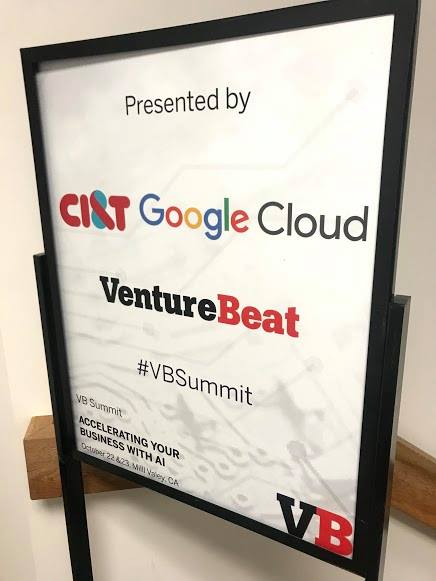VentureBeat AI Summit: Best Practices for leveraging AI to attract, engage and convert customers
Great conversation about the best practices for leveraging AI to attract, engage and convert customers in all areas of their journey during the 2018 VentureBeat AI Summit.
Together with moderator Matt Marshall, Founder of VentureBeat and Valentine Fontama, Global Lead Machine Learning Practice Google Cloud we've talked about building AI-first companies and how it requires more than just hiring data scientists.

A few of my comments were quoted on VentureBeat's AI Weekly:
Though some may believe trying to explain ML to business executives is a waste of time, CI&T chief digital evangelist Lucas Persona believes the biggest breakthroughs belong to companies that enable data science teams to work alongside other employees.
Working shoulder-to-shoulder with the rest of the company means a data science team should not be treated like the wizard behind the curtain or philosophers in an ivory tower.
“ML has become in many organizations more and more … siloed. We are the ML team, the DS team, and every time somebody comes to talk to us, we will say these crazy words [and] they will feel bad about themselves and leave, so it’s kind of off-putting,” he said.
This breakdown in communication only widens the divide between machine learning experts and the rest of the company.
Instead, the entire organization should be encouraged to become AI-literate, so that everyone can think about ways to tackle the company’s biggest problems. The more teams work together, the more other parts of the company may understand the limitations that can be placed on machine learning, and the more other divisions can explain to the data science team the kinds of challenges that could be encountered when retrieving data or implementing an ML model.
Companies that hire data scientists without attempting to cross-pollinate between other departments can create solutions that go underutilized or sit on a shelf, Persona said. But once the whole company is thinking about ML, initiatives can move beyond creating models based on datasets that already exist to creating datasets needed to solve a company’s most pressing problems.
“What is best? For us to spend six months on the data we have for a problem that doesn’t really solve a lot of things or spending six months figuring out how to acquire the data — because once we do it, then we can solve a problem, then we can tackle the biggest questions there,” he said. “That’s pretty much like you opening your fridge and saying ‘Let’s cook tonight’ and being limited to what you have in the fridge. The other approach is ‘OK, what’s the best dinner I can make tonight?’ and then I go buy the ingredients I need.”
The takeaway from these discussions was that the trend of paying data scientists exorbitant amounts of money for their expertise isn’t going anywhere, but there’s more to building an AI-first company than hiring the latest talent out of MIT or Carnegie Mellon. It’s also about preparing the rest of your team to work alongside them.